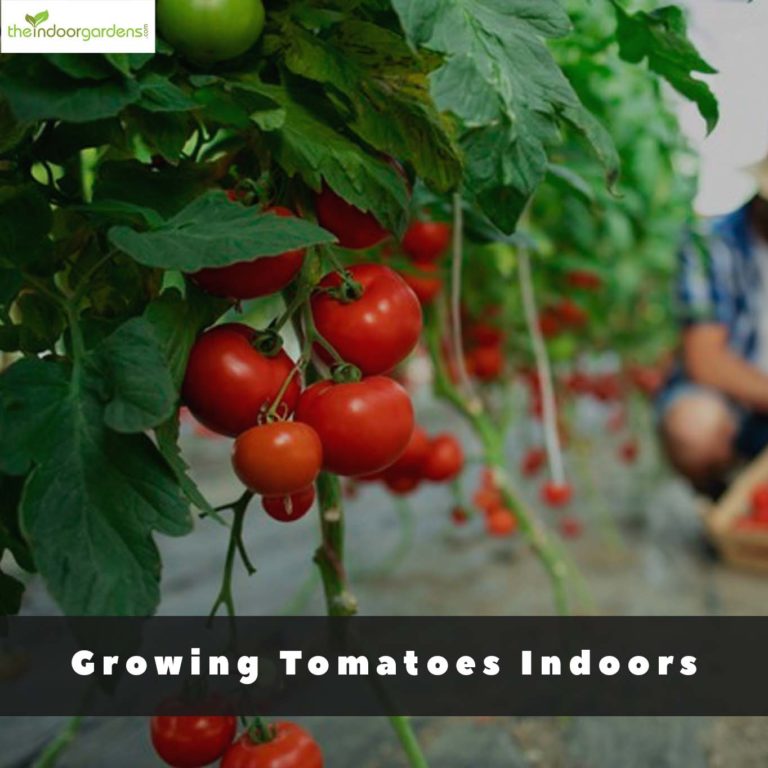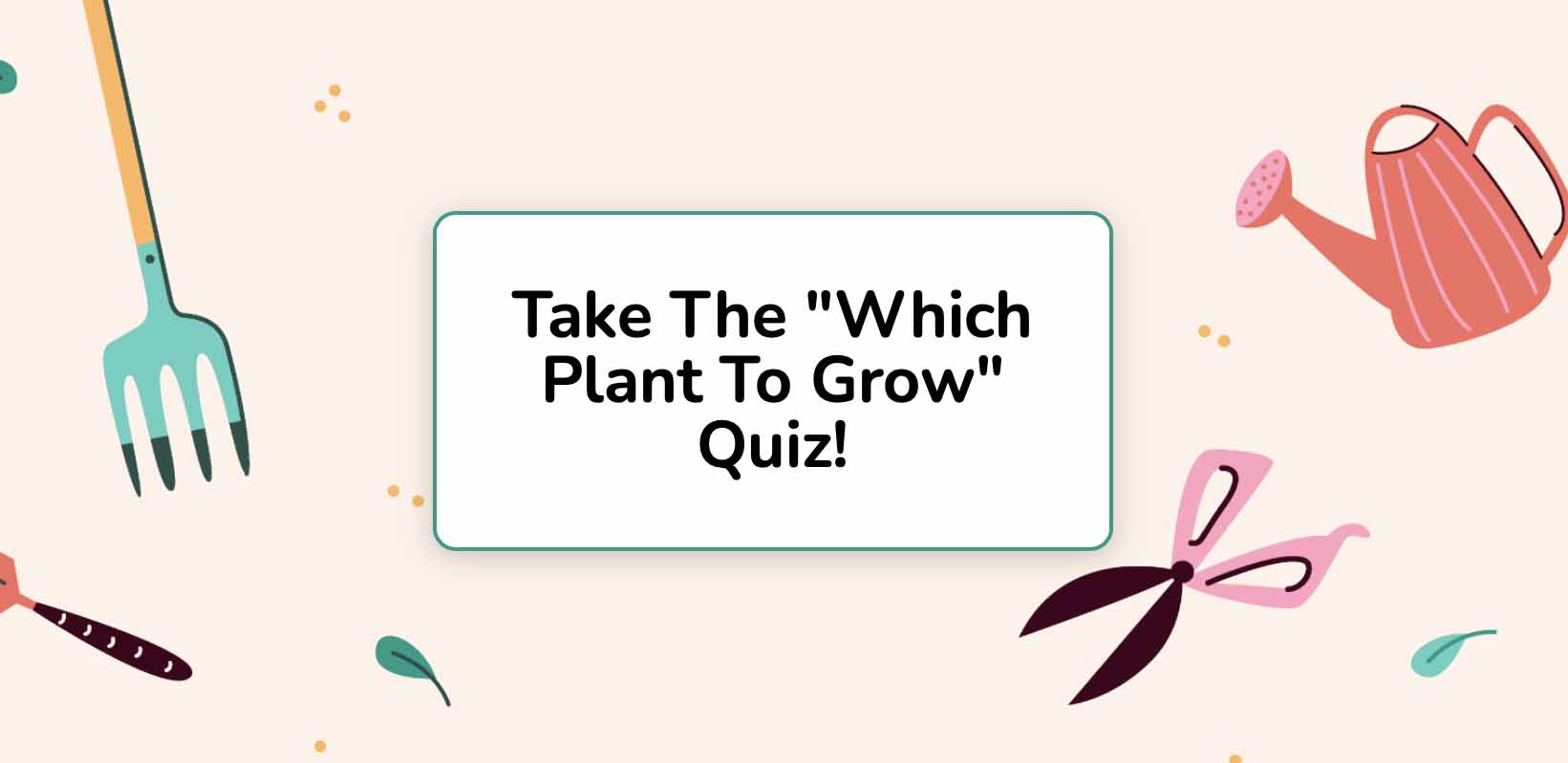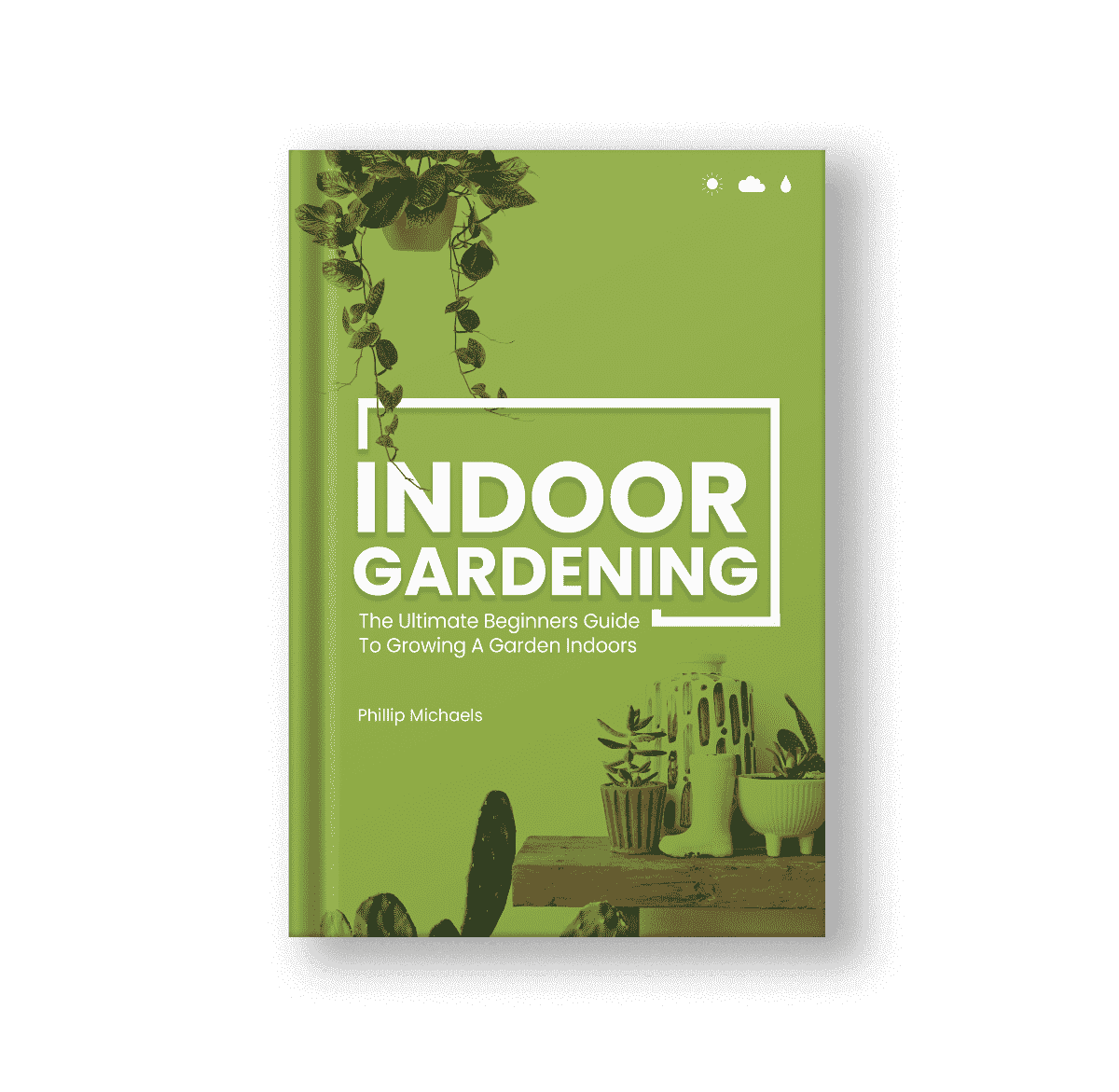Nothing quite brings a garden together like a big, healthy tomato plant. While one of the most popular outdoor plants, growing tomatoes indoors is seen by many as daunting and difficult. That view is unfortunate as the strict requirements for light and temperature mean their outdoor growing season is limited. Growing tomatoes indoors lets us greatly extend the growing season and harvest more of this delicious fruit. Today we hope to answer some common questions and show you it’s definitely possible to start growing tomatoes indoors.
Growing Tomatoes Indoors Quick Overview
- Tomatoes are light-loving plants, look to give them 10+ hours of bright light per day.
- Keep your plants warm and protect them from freezing temperatures and frost.
- Start with a large container and plan to use trellis or staking to keep them upright
- Water when the top inches of the soil dries out.
- Harvest just before the tomatoes become ripe. This can be between 60-100 days depending on variety.
- For the easiest indoor growing, grow cherry or other small-sized varieties.
Setting Expectations
First off it’s important to be realistic and set expectations for your tomatoes. While it’s possible to grow tomatoes indoors, they generally don’t grow as big as those grown outdoors nor do they produce fruit as fast. This is generally due to a lack of proper temperature and light indoors. If you have the means to provide the right environment (like in a greenhouse) then indoor tomatoes can compete with outdoors-grown ones, but this isn’t practical for most growers.
Tomatoes are also very finicky plants and can be tricky to grow. Don’t get discouraged if it takes a few tries to get it right, it’s well worth the effort in the end.
Don’t take this as a negative though. Even with less-than-ideal conditions harvesting delicious tomatoes is a very real possibility. Just be prepared to put in a little work to get your plant to that point.
Top Tomato Varieties
It’s also important to note that there are a variety of different tomatoes you can grow. For indoor growth, look for ones labeled as “micro dwarf” as they are bred to grow in small spaces. You also have the option to overwinter tomatoes from outdoors to extend their growing time. You can opt to take the whole plant or take a cutting and transplant that to a new pot. We’ll talk a bit more about overwintering later.
With that in mind, here are a couple of our favorite tomato varieties to grow indoors.
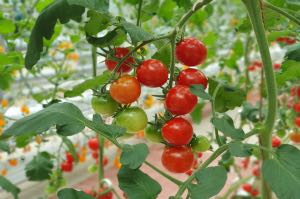
Cherry
Great for indoors due to their small size, these guys are not lacking in flavor. Expect to harvest a lot as they tend to ripen quicker due to their small size and quick growth cycle.
Cherry Tomato Seeds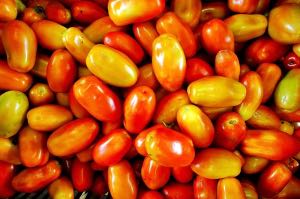
Roma
Also called plum tomatoes, these are another smaller variety that is great for indoor growing. Noted for their more oblong shape, these are popular for canning and preserving as well as for making sauces.
Roma Tomato Seeds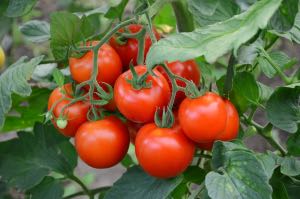
Celebrities
Celebrities are a larger variety of tomatoes that are best for those with a lot of indoor space. Those that grow them will be rewarded with large, delicious fruits that are the classic tomato in both size and flavor.
Celebrity Tomato SeedsPlanting and Container
When choosing a container the most important thing is to make sure it has good drainage and can adequately “breath”. In most cases, it’s recommended to use clay pots as they provide both of the above. Clay pots are porous and whisk away water, which can combat issues with overwatering.
Other containers and pots will work, but you need to take extra care that the soil doesn’t remain too wet which can lead to root rot. Make sure whichever container your choose has drainage holes to allow excess water to escape.
No matter the type, look for a container that is 16” in diameter or larger. This ensures your plant has enough room to grow. Smaller than this can lead to issues as your plant may outgrow its home.
You can always start your tomato plants from seedlings, but many gardeners opt to start from seeds. Many indoor growers will plant multiple batches of plants a few weeks apart. This gives them the best chance of a successful plant, as well as giving them the flexibility to try out different varieties.
When starting with seeds, place them about ¼” deep into the soil and gently cover them. Put them in a warm spot that gets lots of sunlight while keeping the soil moist. Using a heat mat can help with this. Once the plant germinates, you can carefully move them to a larger pot and their final home. This can take up to a month for certain varieties so patience is a must. You’ll know the seedling is ready to transplant once it has about 2-3 true leaves.
When transplanting, I tend to place 2-3 seedlings in a single container with the plan to cull them down to a single plant in a few weeks. This helps avoid issues where a seedling unexpectedly dies, and helps ensure at least one will survive.
Tomato Soil
Tomatoes like soil that is slightly acidic, but I’ve found that most commercial potting soils work fine. There are vegetable-specific soils that will work as well but aren’t strictly necessary.
Overall, I wouldn’t stress too much about the soil as you’ll typically run into issues in other areas of care. As long as you’re using high-quality potting soil, and feeding the plant regularly, you should have no issues.
Sunlight and Location
By far the two most important aspects of growing tomatoes, indoors or out, are sunlight and temperature. Without the correct amount of each, the tomato will fail to produce fruit and ultimately die.
For sunlight, look to get at least 10+ hours of bright light each day if not more. This is often the main issue for growing tomatoes indoors as it can be difficult to reach that amount of light in many homes. If you can’t then look to supplement with grow lights and aim to hit 12+. Using a grow light is often a requirement in the winter as the sunlight is less intense.
For temperature, you’ll want to keep your plants in a location that never falls below 65°F, but ideally closer to 75°F. Tomatoes do the best in warm environments, so keeping the temperature up is important. This is often easy enough in the summer as the sunlight will naturally heat the area, but during the winter can be a bit of a concern. Overnighting a bit cooler is fine, but never let the temperature drop too low or it can damage your plant.

Tip
Make sure to keep your tomato plants away from sources of cold. Areas like a drafty window or near air conditioning vents can cause harm to your plant.
Watering and Feeding
You’ll want to keep the soil moist but never soaked. Our common advice is to check the top 1-2” of the soil and water when it is dry, and that advice holds true here. You’ll likely end up watering your plant every couple of days, usually a bit more in the summer.
Look to fertilize your plant every 2 weeks. You can dilute down a liquid fertilizer with water and feed your plants with that. Slow-release capsules are also another good option, just don’t go overboard. During the winter you can cut back on fertilizing as the plant will go dormant and not be actively growing. You may also notice during this time that you water less, and that’s perfectly natural and okay.
Pollination
One unique concern when growing indoors is the lack of wind or bugs to pollinate your plant. Luckily, it’s pretty easy to do so yourself.
Gently tap the flowers as they begin to bloom to get the pollen moving around the plant. You can also take a cotton swab and gently brush the inside of the flowers to move the pollen around. While not strictly necessary, it does help your plant in producing fruit. If you move the plant outside during the summer days then this will be taken care of naturally by visiting insects and the wind.
Harvesting Tomatoes
Harvesting is very easy and should be done just before the fruits are fully ripe. Look to harvest when the tomato is about 3/4 red with a little green still visible. When harvesting at this time you’ll have a few days where the fruit will ripen up. You can leave your tomato out on the counter, and it will be ready to eat in a few days.
To harvest, simply grab the tomato near the step and gently twist it until it pops off. Done correctly, this will not damage the plant. If properly cared for, a single plant will produce several harvests worth of fruit.

Tip
You can encourage fuller growth by pruning back stems after your harvest. This will encourage the plant to grow from the newly pruned areas leading to a large, fuller plant that may produce more fruit.
Overwintering Tomatoes
Tomatoes don’t fair well as the temperature drops, but it is possible for them to survive the winter. The easiest way is to simply bring them indoors before the first frost hits.
I generally bring any outdoor tomato plants inside about 2-3 weeks before the first anticipated frost. I’m also careful to make sure that a surprise frost doesn’t harm my plant.
Leading up to this, it’s important to make sure you’re providing your plants with proper care. Make sure they’re watered and removed any diseased/dying parts of the plant.
Once indoors, provide them with typical care and lots of light. If you’re low on light they may not flower or produce fruits, but can survive until spring.
If you’re planning on overwintering your tomatoes, then it’s best to start them in a container to make them easier to move. Transplanting a large plant can be tricky, and you risk harming the plant. This is a great way to extend the life of your plant or do a hybrid garden that is both outside and in.
Culinary Uses
Tomatoes are very versatile and are used in a wide range of dishes. They are the base of many great sauces, perfect cooked whole, or even served raw. Our advice is to choose a variety that matches your goals as different varieties will have different tastes. Small, cherry tomatoes for example are great cooked into a pasta dish. On the other hand, a large variety like celebrity can be sliced and used to garnish a sandwich. Figure out which varieties work best in the recipes you enjoy and grow those.
Growing Tomatoes Indoors
While tomatoes are not the easiest plant to grow indoors they are far from impossible. With a little bit of effort and knowledge, you can start growing tomatoes indoors in no time at all. Best of all, you’ll be able to enjoy delicious, fresh tomatoes year-round!
Indoor Tomatoes FAQ
Will Tomatoes Grow Indoors During The Winter?
Yes, tomatoes can be grown indoors during the winter. Just be sure to keep up the necessary lighting and temperature to help your plants thrive. Tomato plants will survive with less in the winter by going dormant, but will not produce fruit during this time.
Why Are My Tomato Plants Not Producing Fruit?
The biggest culprit is often lack of light followed by the temperature being too low. Tomatoes need a lot of light, and will not produce any fruits if they don’t get enough.
Which Variety Should I Grow Indoors?
Look for micro-dwarfs or others that take less room. This makes them overall easier to manage and they are better suited for indoor growth. While you can grow full-sized tomatoes indoors, this requires more room and care.
How Long Does It Take To Harvest Tomatoes?
Under proper conditions, it takes about 60-100 days after your seeds have sprouted or from seedling. This may be a bit longer depending on the variety, or if your indoor environment is not completely ideal.

